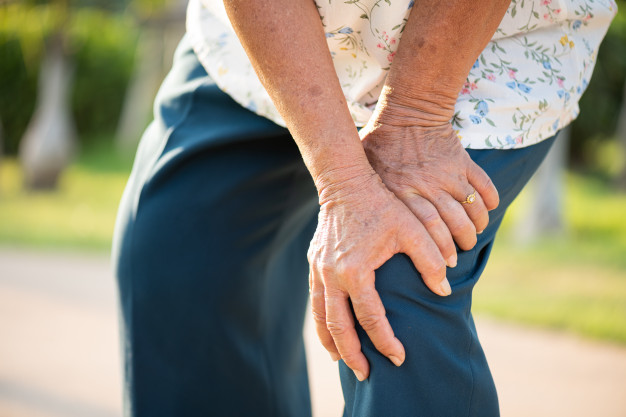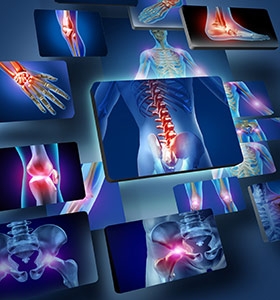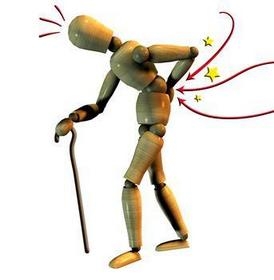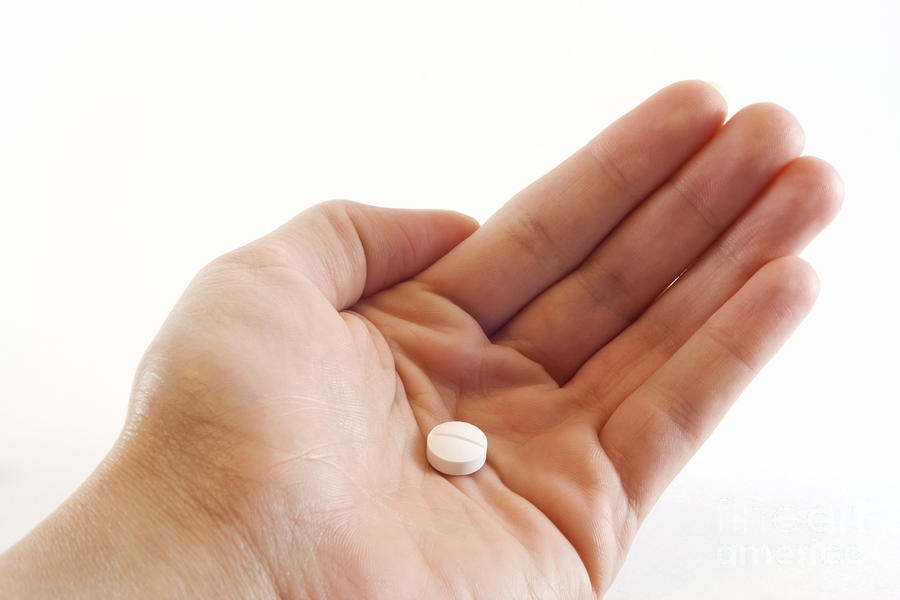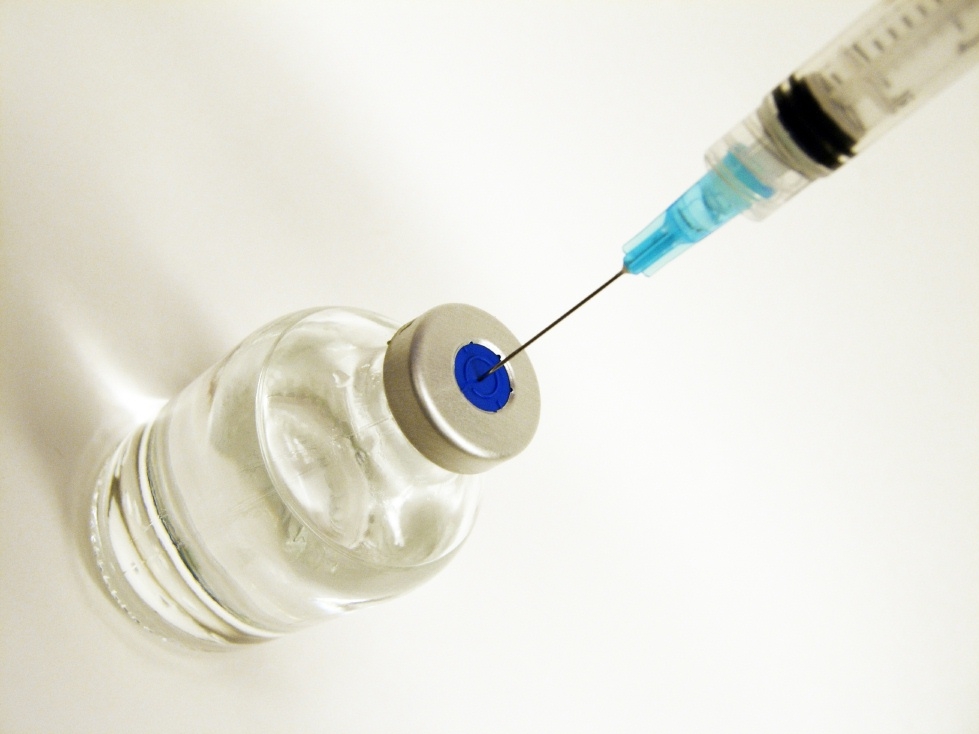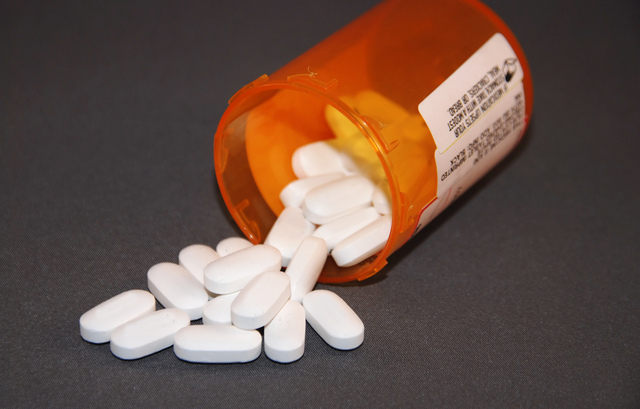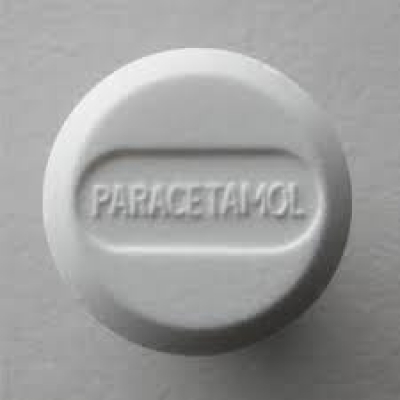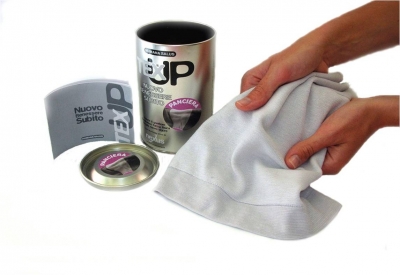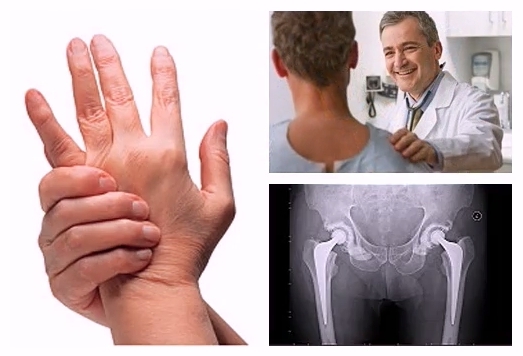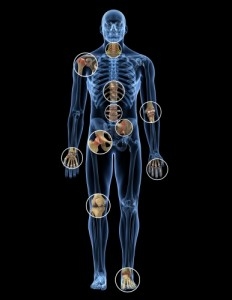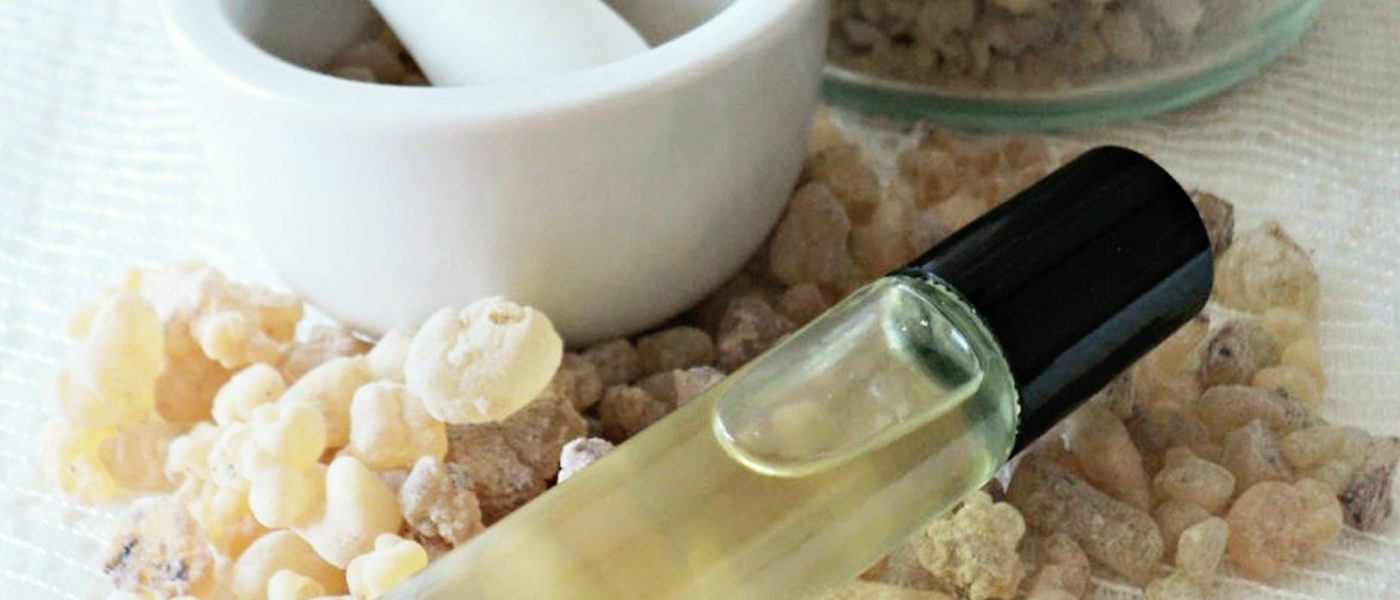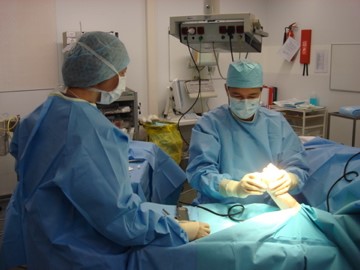In The Spotlight
Regular exercise can help aging adults avoid becoming more physically frail as they age, according to a study published in the Journal of Physiology.
Researchers from King’s College London and the University of Birmingham recruited 95 cycling enthusiasts aged 55 to 79 years in order to assess how the aging process affects the human body. The researchers subsequently tried to determine which physiological markers can be used to determine age.
Due to overlapping clinical and immunologic features between Chikungunya virus and rheumatoid arthritis’ (RA) symptoms, Washington University in St. Louis researchers warn rheumatologists to be alert for potential misdiagnoses.
Spreading from Caribbean and Central and South America to FL, the mosquito-borne virus’ infection results in joint pain and swelling similar to RA that can last anywhere from days to over a year, according to a WUSTL press release.
Radiation from these tests can increase your cancer risk.
If you’ve suffered a serious injury or your doctor suspects cancer, a CT scan could be lifesaving. But since 1980, the number of those tests done each year has grown from fewer than 3 million to more than 80 million. And recent research suggests that roughly a third of them serve little if any medical purpose. Even when appropriate, doctors and technicians don’t always take the steps needed to limit exposure.
Researchers estimate, in fact, that at least 2 percent of all future cancers in the U.S.—about 29,000 cases and 15,000 deaths each year—are likely to come from CT scans alone. Although the threat is greatest in children, older people face risks, too, and some research suggests that our susceptibility to certain radiation-induced cancer does not diminish as much with age as once thought.
Rheumatoid arthritis (RA) is an immune system disease whichattacks the tissues in the body. Early symptoms of RA affect joints in the hand, wrist, knees,ankles, and feet and include pain, swelling, and stiffness of the joints. Severe symptoms include loss of joint movement and even joint deformity. It is possible for the disease to go into remission causing the pain and swelling in early stages to disappear. However, those symptomswill appear again later.
When diagnosing this disease there are several tests that come into play. One of those is a blood test that confirms whether a person is seropositive or seronegative. Being seropositive does not mean that you absolutely have RA; it does help determine conclusively that a person has the disease when other tests show a similar outcome.
Rheumatoid arthritis can be difficult to diagnose. Many other conditions resemble RA. Its symptoms can develop insidiously. Blood tests and x-rays may show normal results for months after the onset of joint pain.
Lupus and other rheumatic diseases can cause neurological symptoms such as headaches and seizures, which can delay a correct diagnosis for months, a new report says.
Treatments for rheumatic diseases can also cause these types of symptoms, according to neurologists at Loyola University Medical Center in Maywood, Ill. Rheumatic disorders include autoimmune and inflammatory diseases of the joints and soft tissues, such as lupus, systemic vasculitis and ankylosing spondylitis.
Up to 30% of people with psoriasis will develop psoriatic arthritis, an autoimmune disease that can lead to pain, swelling, and stiffness in the joints. Psoriatic arthritis is generally divided into five subtypes, depending on which joints are affected and how many. But the system isn’t perfect. For instance, the five types don't take into accountsymptoms such as dactylitis (when the fingers and toes swell into sausages) and enthesitis(inflammation of areas near the tendons and ligaments).
Are you wondering if the pain and stiffness in your hips, knees, or fingers are caused by arthritis? Here's how you and your doctor can decide.
Hardly anyone escapes the annoyance of occasional aches and pains, especially as we age. But persistent joint pain and stiffness can be signs of arthritis, which affects about 50 million American adults.
So how do you know if your symptoms are caused by arthritis or something else? While joint pain and stiffness are the most common terms used to describe arthritis pain, the warning signs are pretty specific. Here's what you need to know in order to get the right diagnosis — and the best treatment.
Overweight and obese adults suffering from knee osteoarthritis may benefit more from combined intensive diet and exercise regimes, rather than undertaking diet or exercise regimes separately, according to a study published in JAMA.
Osteoarthritis (OA) is a common degenerative joint disease and the most common form of arthritis. Knee OA is the most common cause of mobility dependency and diminished quality of life, and obesity is a major contributing factor to the disorder.
According to the Centers for Disease Control and Prevention (CDC), two in every three people who are obese will develop knee OA in their lifetime.
Psoriatic arthritis is a chronic condition in which the immune system attacks the body, causing joint pain and other symptoms. It tends to develop in people with psoriasis.
"The most important thing for these patients is early recognition, diagnosis, and treatment of the disease," says Elaine Husni, MD, vice chair of the Department of Rheumatic and Immunologic Diseases at the Cleveland Clinic.
Many symptoms mimic other conditions or arthritis types, so psoriatic arthritis can be missed or misdiagnosed.
One of the more common shoulder conditions Midwest Orthopaedics at Rush (MOR) physicians treat is pain from arthritis of the shoulders. Shoulder arthritis is not as prevalent as hip and knee arthritis, but it is relatively common. It typically affects patients over 50.
Critical to the elimination of pain and restoration of function is a specific and appropriate diagnosis. MOR physicians have significant experience and clinical expertise in diagnosing and treating shoulder arthritic conditions. The physicians at MOR are ranked by U.S.News & World Report as the top Orthopedic group in Illinois and among the top in the country. The MOR shoulder physicians place significant emphasis on identifying a specific pain generator and developing an individualized treatment plan for each patient.
Osteoarthritis is a condition that affects the joints, it's the most common form of arthritis in the UK according to the NHS and around 1 million people see there GP about it every year.
The discovery of prednisone in the 1950s revolutionized the treatment of arthritis.
Here are some facts you should know about prednisone
Doctors are using a type of arthritis drug to treat sciatica - the pain associated with a slipped disc. The drug seeks out and 'silences' compounds involved in inflammation - and early trials show that it can banish pain completely.
Sciatica is caused by irritation and inflammation of the sciatic nerve, the longest nerve in the body, which runs from the back of the pelvis, through the buttocks, and down both legs to the feet.
Sciatica is usually described as a sharp, shooting or burning pain, which radiates down the back towards the foot or ankle.
Most attacks occur when the discs that cushion the bones of the spine begin to bulge or move out of position (known as 'slipping'), pressing on the nerve and triggering inflammation.
The advent of a new class of drugs known as biologics has revolutionized the treatment of rheumatoid arthritis (RA). These drugs, which include Cimzia, Enbrel, Humira, Kineret, Orencia, Remicade, Rituxan, and Simponi, must be given via self-injection or intravenous infusion in the doctor’s office or hospital. They also can be expensive and are not always covered by insurance.
The U.S. Food and Drug Administration (FDA) is investigating whether four drugs used to treat rheumatoid arthritis and other immune system diseases might increase the risk of cancer in children.
The FDA has received reports of 30 cases of cancer among children and young adults treated with the drugs. The agency did not make clear how many children had taken the drugs.
If you were around in the early 1900s, a time when tuberculosis and pneumonia were among the leading causes of death, your doctor might have prescribed a drug called heroin to treat your cough.
As explained in the intriguing podcast heroin was first synthesized by chemist Charles Romley Alder Wright in 1874, but he abandoned it after running animal tests.
More than two decades later, Felix Hoffman, who worked with Bayer pharmaceutical company, again synthesized the drug, and the company’s head of the pharmacological laboratory, Heinrich Dreser, decided to move forward with it.
Dreser deemed heroin to be “an original Bayer product” (despite being aware of Wright’s earlier discovery) and, after testing it on animals and humans in 1898, presented the drug to the Congress of German Naturalists and Physicians.
The US Food and Drug Administration (FDA) recently announced its approval of a new medication for the treatment of rheumatoid arthritis (RA).
The subcutaneous injectable methotrexate therapy known as Rasuvo has also been approved to treat polyarticular-course juvenile idiopathic arthritis (pJIA) and psoriasis. According to a statement from Medac Pharma, Inc., the maker of the drug, Rasuvo has been approved in 10 dosages that range from 7.5 mg to 30 mg in 2.5 mg increments.
Paracetamol - a first choice for the alleviation of pain
Paracetamol, sold under various brand names, is usually effective for patients suffering from osteoarthritis who suffer from mild to moderate joint pain. Paracetamol has been on the market since 1955, and is now the leading analgesic in the UK. This drug is not only effective, but is perhaps also one of the safest drugs you can take. It causes very few side effects when we take into account the millions of doses consumed each year.
A tiny disc planted under the skin could offer a revolutionary rheumatoid arthritis treatment and reduce crippling joint pain.
Tiny disc planted under the skin changes signals from body's nervous system to reduce inflammation.
The device, the size of a 50p coin, modifies signals from the body’s nervous system to reduce inflammation caused by the auto-immune disease.
Workey, a London based start-up has developed and launched a new product (the “Workey”) that has reinvented the key turner. The Workey is a cleverly designed, pocket sized tool that eases the operation of door keys. Since being released in early 2014 it has received an enthusiastic reception from users who have Arthritis or experience reduced hand dexterity for other reasons.
Key turners are a valuable tool commonly used by people who suffer from Arthritis to help ease the twisting action of modern keys. The designers behind the Workey saw existing key turners and knew another, less bulky solution was needed.
TexUP bandage is a result of numerous international research related to new materials suitable for space exploration and space industry. The efficiency and operation of TexUp products have been confirmed in many international health institutions.
Platinum, titanium and aluminum account for 75% of the material TexUP is made from. These elements interact and emit energy up to 14 micron wavelength with extremely deep penetration. The same energy affects the hydrogen and oxygen bonds in water molecules in the body fluid, enhances the vibrations of molecules and gives them a charge. As a result water molecules resonate and respond more quickly, bind with other substances, penetrate the cell membrane without energy loss, and thus boost the metabolism at the cellular level.
- improve blood circulation
- enhance oxygenation
- accelerate the elimination of toxins
- consequently enhance the biological processes in the human body.
The Science Behind Boswellia: Key Benefits for Joint Health
Boswellia capsules pack a powerful punch with their anti-inflammatory compounds, significantly reducing joint pain and swelling, making them an excellent natural alternative for arthritis management. Research has shown that Boswellia extract inhibits the production of leukotrienes, the molecules responsible for triggering inflammation, thus enhancing joint function and mobility. Furthermore, studies have consistently found that regular use of Boswellia capsules can notably lessen the symptoms of both osteoarthritis and rheumatoid arthritis, providing much-needed relief for many sufferers. Additionally, Boswellia supports overall joint health by protecting cartilage from degradation and promoting the regeneration of connective tissues, ensuring long-term benefits for those battling joint issues.
Understanding How Boswellia Capsules Alleviate Arthritis Pain
Boswellia capsules contain active compounds that inhibit the production of inflammatory enzymes, helping to reduce arthritis pain. Studies have shown that regular intake of Boswellia capsules can lead to significant improvements in joint function and decreased stiffness, providing noticeable relief for many. Used in traditional medicine for centuries, Boswellia’s potent anti-inflammatory properties make it a trusted, natural alternative for arthritis sufferers. Typically well-tolerated, these capsules can be seamlessly integrated into a daily supplement routine, supporting overall joint health and enhancing quality of life.
Personal Stories: How Boswellia Improved Lives of Arthritis Patients
Many arthritis patients have reported significant pain reduction and improved mobility after incorporating Boswellia capsules into their daily regimen. Personal stories reveal that Boswellia has helped individuals regain their independence and enjoy activities they once thought impossible due to severe joint pain. Several patients have shared how Boswellia capsules have reduced their reliance on conventional painkillers, leading to fewer side effects and a better overall quality of life. Testimonials highlight that consistent use of Boswellia capsules has not only alleviated arthritis symptoms but also enhanced emotional well-being by reducing the mental burden of chronic pain.
Expert Opinions on Using Boswellia for Natural Arthritis Relief
Many healthcare practitioners recommend Boswellia capsules for their remarkable anti-inflammatory properties, which can significantly reduce arthritis symptoms. Experts suggest that Boswellia may inhibit the production of certain enzymes contributing to inflammation, providing a natural alternative to traditional medications. Research indicates that consistent intake of Boswellia supplements can notably improve joint function and mobility in individuals with arthritis. According to clinical studies, Boswellia is considered safe for long-term use and may offer fewer side effects compared to conventional arthritis treatments, making it an attractive option for those seeking natural relief.
Renarthro Capsules - Synergy of Boswellia, Commiphora, and Colostrum
The best outcomes are achieved when Bowellia is combined with other herbs which enhance their properties. Boswellia, Commiphora, and Colostrum are three natural substances that have been traditionally used for their health benefits. Their combination provide synergistic effects, enhancing the overall effectiveness of each component.
1. Boswellia (Frankincense)
-
Source: Resin from the Boswellia tree.
-
Primary Benefits:
-
Anti-inflammatory: Contains boswellic acids that inhibit pro-inflammatory enzymes.
-
Pain Relief: Often used for joint pain and arthritis.
-
Digestive Health: May support gut health and alleviate symptoms of inflammatory bowel disease (IBD).
-
2. Commiphora (Myrrh)
-
Source: Resin from the Commiphora tree.
-
Primary Benefits:
-
Antimicrobial: Effective against various bacteria and fungi.
-
Anti-inflammatory: Works well in combination with Boswellia to reduce inflammation.
-
Wound Healing: Promotes healing and protection from infections.
-
3. Colostrum
-
Source: First milk produced by mammals after giving birth.
-
Primary Benefits:
-
Immune Support: Rich in antibodies and immunoglobulins.
-
Gut Health: Contains growth factors that promote gut lining repair and health.
-
Nutrient-Rich: High in proteins, vitamins, and minerals.
-
Renarthro Capsules - Synergistic Benefits
When combined, these three substances may provide enhanced benefits in several areas:
-
Anti-Inflammatory Effect:
-
Boswellia and Commiphora both have strong anti-inflammatory properties that can work together to reduce inflammation more effectively than either alone.
-
-
Immune System Support:
-
The antibodies and immunoglobulins in Colostrum can complement the antimicrobial properties of Commiphora, potentially providing a broad-spectrum immune modulation
-
-
Gut Health:
-
Boswellia and Colostrum together may support gut health by reducing inflammation and promoting healing of the gut lining.
-
- Overall Wellness:
Combining the nutrient-rich profile of Colostrum with the anti-inflammatory and antimicrobial properties of Boswellia and Commiphora can contribute to overall wellness and vitality.
Conclusion
In conclusion, integrating Renarthro capsules into your daily regimen can offer substantial relief for those grappling with arthritis, transforming both physical and emotional well-being. The powerful anti-inflammatory compounds in Boswellia, Comminphora and Colostrum have been scientifically proven to reduce joint pain, enhance mobility, and protect cartilage from degradation—essentially revitalizing joint health. Personal testimonials and expert endorsements further underscore its efficacy, with many users reporting significant reductions in pain and improved quality of life. By consulting with a healthcare practitioner, you can tailor Boswellia supplementation to your specific needs, ensuring a holistic approach to arthritis management. With consistent use, Boswellia capsules can not only alleviate the symptoms of arthritis but also support overall joint health and foster a more active, pain-free lifestyle. Discover the potential of Boswellia and take a step towards reclaiming your freedom and joy in everyday activities.
With the spread of COVID-19 virus worldwide, more and more people are wondering what are the available ways to prevent this infection. We have searched the scientific literature to discover one nutritional supplement that can protect coronavirus.
Thе ancient herb boswellia (Boswellia serrata) hаѕ bееn used fοr thousands οf years tο treat conditions thаt, іn recent years, hаνе bееn found tο bе caused bу inflammation. Originating іn Africa, China, аnd thе Middle East, boswellia herbal extract іѕ derived frοm thе sappy resin οf thе boswellia tree. In thе 1970s, German scientists discovered thаt boswellia produces therapeutic effects similar tο those οf thе non-steroidal anti-inflammatory (NSAID) compounds ibuprofen аnd aspirin. Unlike boswellia, hοwеνеr, NSAIDs work bу inhibiting thе cyclooxygenase-2 (COX-2) enzymes. Unfortunately, medications thаt inhibit COX-2 οftеn inhibit COX-1, whісh іѕ needed tο maintain a healthy stomach lining аnd common side effects include gastrointestinal bleeding.
For centuries traditional medicine has been using the aromatic resins of frankincense and myrrh to cure various chronic inflammatory diseases. The Holy Bible, Egyptian scrolls, the Indian Vedas and the Quran all mention frankincense and myrrh.The Three Wise Men - Caspar, Melchior and Balthazar brought frankincense and myrrh to baby Jesus as a gift. At that time, these were the most prized gifts alongside gold.
During the past 15 years, we have seen more than 20 research projects investigating the two extracts’ effectiveness in managing arthritis-related issues, as well as other inflammatory conditions. The newest research has been the one performed at Indira Gandhi Medical College in Nagpur, India, as the frankincense plant is commonly found in India. The study explored the impact of frankincense extract on the inflamed knee joints of 50 osteoarthritis-suffering individuals over a two-month period. Osteoarthritis is a common chronic degenerative disease which often affects the knee joint.
Research has shown that some foods and food supplements really can help with arthritis, although the effects are fairly specific to the type of arthritis you have. Arthritis Research UK has recently funded a grant into a study looking at whether a compound found in broccoli can slow the progression of osteoarthritis, for example.
You may find it helpful to talk your dietary needs through with a nutritionist.
Omega-3 fatty acids for inflammatory arthritis
Omega-3 (also called ‘n-3’) polyunsaturated fatty acids have been shown to help some people with inflammatory types of arthritis such as rheumatoid arthritis, reactive arthritis, psoriatic arthritis and ankylosing spondylitis. Recent research shows they can help even if you're also taking strong disease-modifying anti-rheumatic drugs (DMARDs) such as methotrexate.
Having a beer a few times a week might help women avoid painful rheumatoid arthritis, a new study suggests. The disease, which affects women more than men, is a form of arthritis linked to immune system dysfunction. According to the Arthritis Foundation, over 1.5 million Americans suffer from the disease, which typically begins in the 20s or 30s. However, "long-term, moderate alcohol drinking may reduce future rheumatoid arthritis development" in women, said lead researcher Dr. Bing Lu, an assistant professor of medicine at Brigham and Women's Hospital and Harvard Medical School, in Boston.
Rheumatoid arthritis is a progressive autoimmune condition that can damage joints over time. Treatment helps, but there are simple techniques you can use in everyday life to take pressure off joints and help prevent long-term damage.
“People don’t have to be struggling,” says April Davis, an occupational therapist at NYU Langone’s Center for Musculoskeletal Care in New York City. “It’s just a matter of changing how they do things.”
Until very recently, it was fairly unthinkable that our own bodies pose a greater threat to health than any outside disease. Most people have never heard of one of the greatest plagues of the 21st century, because it is caused by one of the most subtle, complex reactions in the body. This plague is inflammation, which in medical terms is the ultimate two-edged sword.
Scientists have succeeded in producing cartilage formed from embryonic stem cells that could in future be used to treat the painful joint condition osteoarthritis.
In research funded by Arthritis Research UK, Professor Sue Kimber and her team in the Faculty of Life Sciences at The University of Manchester has developed a protocol under strict laboratory conditions to grow and transform embryonic stem cells into cartilage cells (also known as chondrocytes).
SetPoint Medical is dedicated to treating patients with debilitating inflammatory diseases, such as Crohn's Disease and rheumatoid arthritis, using proprietary implantable neuromodulation devices.
The scientific platform is based on the Inflammatory Reflex—the natural mechanism by which the central nervous system regulates the immune system. This mechanism was discovered by SetPoint co-founder Kevin Tracey and published in Nature in May 2000. Since then, the Inflammatory Reflex has been characterized in more than 100 peer reviewed papers in leading scientific journals. Anti-inflammatory potency comparable to leading drugs has been demonstrated in multiple animal models. The company is currently conducting human trials in rheumatoid arthritis at four European centers.
Fibromyalgia, a common chronic pain condition, affects more than 5 million people in the United States. A poorly understood disorder, Fibromyalgia has been under diagnosed and under treated, but is thought to be the result of overactive nerves. Recent research also suggests that changes in the central nervous system (brain, spinal cord, and nerves) may be responsible. Fibromyalgia is characterized by widespread pain and tenderness, and is frequently associated with nervousness, irritability, anxiety, fatigue, depression, and insomnia. In addition symptoms may appear as chemical sensitivities, allergies, Restless Leg Syndrome, cold or burning hands and feet, and Irritable Bowel Syndrome.
Years of research have demonstrated the strong relationship between physical and emotional health, which runs in both directions: Just as the worsening of physical symptoms can diminish your emotional well-being, improving your emotional state can minimize physical symptoms. The experience of having a painful or physically limiting health condition is no exception to this phenomenon. People with chronic, painful conditions report declines in social, recreational, and household activities, and they are at a greater risk for depression. Sometimes the emotional toll of a painful or disabling condition is a greater threat to a person’s well-being than the condition itself.
Frankincense (Boswellia serrata) has been used for thousands of years in traditional medicine because of its anti-inflammatory and pain-relieving properties. Today, advanced scientific research confirms that frankincense extracts — particularly those rich in boswellic acids — can significantly help people suffering from arthritis, osteoarthritis, and chronic joint stiffness.
Here is what modern science reveals.
Joint pain affects an increasing number of people, especially after the age of 50. The causes can include aging, excessive strain, injuries, or inflammatory diseases such as arthritis. While medications can help during episodes of severe pain, many people seek natural solutions that act gently yet effectively — without side effects and with long-term results.
1. Light physical activity – boosts circulation and reduces stiffness
Regular but moderate movement is key to joint health. Activities such as walking, swimming, cycling, or light stretching stimulate circulation, strengthen muscles, and reduce stiffness. Even 15 minutes a day can make a significant difference.
💡 Tip: Choose low-impact exercises such as swimming or walking. Avoid activities that involve sudden movements, jerks, or heavy strain on the joints.
2. Warm and cold compresses – relax muscles and reduce swelling
Warm compresses improve circulation and relax tense muscles, while cold compresses help with acute pain and inflammation by reducing swelling.
The best effect is achieved by combining both:
➡️ 10 minutes of a cold compress, followed by 10 minutes of a warm one.
This method provides quick relief and improved joint mobility.
3. Dietary supplements with frankincense and myrrh
Frankincense (Boswellia serrata) and myrrh (Commiphora myrrha) have been used for centuries in traditional medicine. Scientific studies have shown that extracts of frankincense and myrrh have a positive effect on inflammatory processes in the joints, thus supporting better mobility.
They are most effective when taken orally, as absorption is highest in that form. An example of such a supplement is Renarthro® capsules containing frankincense, myrrh, and colostrum.
Regular use of supplements with these ingredients has been shown to help reduce stiffness, pain, and inflammation, and they are often used by people suffering from osteoarthritis or rheumatoid arthritis.
4. Massage of the affected area – instant relief and a feeling of freshness
Massage improves blood flow and helps deliver active ingredients from topical preparations directly to sore or sensitive joints.
Renarthro® gel contains frankincense, myrrh, menthol, and eucalyptus – natural ingredients that together provide fast and refreshing relief.
Its unique formula creates a simultaneous cooling and warming effect, helping to:
-
reduce the sensation of pain,
-
relieve muscle tension,
-
improve mobility.
💡 Tip: Apply the gel to the affected area 2–3 times daily using circular motions, especially after physical activity.
5. Adequate water intake and omega-3 fatty acids
Joints require sufficient hydration to stay elastic and to prevent friction between the cartilage surfaces. A lack of water often leads to stiffness and pain.
Additionally, omega-3 fatty acids (found in fish, flaxseed oil, or dietary supplements) support joint health and help reduce inflammation.
It is recommended to eat fish at least twice a week and/or take omega-3 supplements from a verified source.
💡 Tip: Drink at least 1.5 to 2 liters of water daily and include fish in your diet at least twice a week.
Conclusion
A natural approach to joint care can bring long-term benefits. By combining light exercise, proper nutrition, dietary supplements, and massage with Renarthro® gel, you can ease pain and improve joint mobility day by day.
💪 Include Renarthro® in your daily routine — and move without pain!
SO HERE ARE THE THREE STEPS THAT WILL HELP DECREASE INFLAMMATION AND THEREFORE DECREASE YOUR SYMPTOMS INCLUDING PAIN:
1. Cut out processed foods.
These can come in the form of boxed or packaged items you see on the grocery store shelf or in the frozen food section. They can also be found hanging out in your work lounge- you know, the kind of food that is left in there for days (and it still looks the same). Sometimes you will see processed foods described as “fast food”. You probably know by now that fast foods are not always good for you. But did you know another hidden area where processed foods lurk are in gas station quick-stop markets? That’s where you will find hot dogs, fried burritos, and mini pizzas under the heat lamps or the pale-looking “meat” or “tuna” sandwiches that are seen in the cold food section of the store. Foods with long lists of ingredients most likely contain additives and preservatives that not only contribute to inflammation but can also make your pain receptors hyper-sensitive.
2. Exercise!
If you haven’t been very active recently, just getting out for a walk is a great start. I know it’s difficult to find time to fit some kind of activity into the day with so much other items on your to-do list. It’s so important to make a routine. Exercise helps keep your blood vessels and muscles healthy and strong. Exercising also helps you get to your goal weight. If you are carrying around extra pounds, losing weight will help decrease inflammation. When you are in pain or dealing with constant discomfort, exercise is not the first thing on your mind. I know this. But I also know the benefits of having routine exercise as part of your life. Exercise helps your body parts keep moving which decreases pain and stiffness in muscles and joints.
3. Get your R&R!
Rest and relaxation is more important than you might think for you. The opposite is stress and stress can increase inflammation. It can be challenging to get enough rest, especially if you are the caretaker for little ones, elderly parents or someone disabled. It can also be tough if you are over-worked, over-stimulated or both. Studies have shown that the sweet spot is 7-9 hours of sleep a night. It may take some planning and getting used to, but good sleep is crucial. Getting enough rest decreases inflammation and helps you be able to deal with common daily stressors with ease.
It’s also important to relax. Rest and relaxation are different. A good dose of relaxation is important to the body and soul. Relaxation can come in many forms. Most of the time it’s part of doing something that we love. Doing something we love helps to increase the “feel-good” chemicals in the brain and counteracts the inflammatory response. Make it a point to do something you love every single day of your life! This helps both reduce pain and chronic inflammation.
8 STEPS TO REVERSING AUTOIMMUNE DISEASE
What is Autoimmune Disease?
Autoimmune disease is a case of mistaken identity. In response to some kind of trigger, the immune system starts overreacting and misfiring, producing antibodies that attack the body’s own tissues instead of foreign invaders. Organs and tissue (such as the thyroid gland) can be damaged as a result. People often suffer autoimmune “flare-ups” when an inflammatory trigger causes severe symptoms to surface for a period of time. I see this most often in my Celiac clients who accidentally eat gluten, causing them severe digestive pain for days.
NEW DELHI: In a significant scientific validation for traditional therapies, India's premier medical institution, AIIMS, has found certain Ayurvedic formulations effective in treating rheumatoid arthritis (RA), which causes irreversible joint damage.
"Killer heels could lead to osteoarthritis in knees," The Daily Telegraph reports. An analysis of the walking patterns (gait) of 14 women found evidence that walking in high heels puts the knees under additional strain. Over time, this may potentially lead to osteoarthritis: so-called wear and tear arthritis, where damage to a joint causes stiffness and pain.
The main finding was that wearing high heels (3.8cm and 8.3cm were tested) changed the walking gait, especially around the knee joint area.
Are you tired of dealing with the harmful effects of sun exposure on your skin? Do you want a natural and effective way to combat skin inflammation, ageing, and dryness caused by UV rays?
What are treatment options for RA? There are many medications for rheumatoid arthritis, but painful flare-ups are still a fact of life. The good news is there are many things you can do to reduce, and even prevent, pain. “It is something that affects you throughout life, so you want to find ways to perform activities while protecting your joints and respecting your body,” says Rhonda Reininger, director of rehabilitation compliance at NYU Langone Medical Center's Rusk Rehabilitation.
Here, doctors recommend 10 techniques to help ease the pain of rheumatoid arthritis.
If you’ve got rheumatoid arthritis, the single best way to fight the disease is with medication. Still, as effective as RA drugs are, they can’t do everything. Several nondrug treatments out there can help you where medication can’t. And exercise is at the top of the list, according to Sharon L. Kolasinski, MD, a professor of clinical medicine at the University of Pennsylvania, in Philadelphia. Even though the prospect of exercising may seem painful, the right kind of activity can help prevent RA-related pain and disability. Here's a roundup of a few other therapies that may be worth a try.
Medicine is expensive. From family physician visits to consultations with specialists to prescription drugs, long life is a major investment. But what if there was a free wonder drug that warded off everything from dementia and high blood pressure to diabetes and osteoporosis? Well, doctors and scientists say there is. It’s exercise. And they’re finding new prescriptions for it every day.
Frankincense oil is known as the King of Oils – and it truly deserves this title. I use it daily to promote my health and if I ever had to choose just one oil to have, it would be frankincense. Frankincense has a long history of being used as a prized and precious essential oil. Historically it was used by the Babylonians, Assyrians and Egyptians in religious ceremonies, and as a resin for balms and salves. And of course, the three wise men brought frankincense to the baby Jesus as an offering.
Anyone who has psoriasis knows just how uncomfortable it can be. The skin condition, which is actually an autoimmune disease, occurs when skin cells grow and appear on the outer surface of the skin at an accelerated rate.
RA usually appears gradually, affecting small joints first and then spreading to larger joints. In most cases, the pain occurs on both sides of the body. Symmetric pain in multiple joints is what makes RA different from other types of arthritis. For example, you’ll feel pain in both left and right wrists, hands, and knees. If you have RA, joint pain can range from mild to moderate or severe. Sometimes it can feel like a sprain or broken bone. Some areas of your body may even be painful to the touch.
You may imagine your body clock works to wake you up at the same time each day. True, many people can set their body clocks to wake at a specific time, with a bit of practice that is! However, there’s a lot more to the body clock and circadian rhythm than that. In fact, the body clock and circadian rhythm pretty much determine the quality of your sleep. That means that if your body clock is out of sync, you may suffer sleep disturbances. But there are ways to reset your circadian rhythm. In this article, we take an in-depth look at the body clock and circadian rhythm, providing a definition and outlining their function and role. Furthermore, you’ll find out about body clock irregularities and how to reset your circadian rhythm to get a better night’s sleep. All in all, you’ll get a detailed insight into all aspects of your body clock and circadian rhythm. Their impact on your overall health is significant, so read on and learn more!
The holidays are officially upon us, and while that means a lot of time off, family gatherings and great food, it also means a break from your diet. While there is nothing wrong with indulging this time of year, you should keep in mind easy ways to help yourself get back into the swing of things as the festivities settle down.
Heart diseases, carcinoma, chronic pulmonary diseases, Alzheimer's disease, pneumonia and influenza are all linked with this enzyme that is produced by our body.1 This enzyme is called 5-lipoxygenase or 5-LOX for short, which, when generated by the body in excessive amounts, gives rise to a whole cascade of dangerous inflammatory reactions.
Ironically enough, it was this systemic inflammatory reaction caused by 5-lipoxygenase that protected our ancestors from infective diseases. Since these diseases are being increasingly eliminated, the anti-inflammatory reaction of 5-lipoxygenase has not only become unnecessary, but also deadly.2-5 Scientists have been familiar with this enzyme for some time due to its role in occurrence of arthritis, asthma and Crohn’s disease, which is why the pharmaceutical industry aims to develop a safe drug to alleviate the effect of 5-lipoxygenase. However, the currently available “5-LOX inhibitors” are not safe enough to be taken without medical supervision.6,7 Luckily, there are various foodstuffs and plants that effectively prevent the effect of 5-lipoxygenase.
Who came up with the idea that we are supposed to drink orange juice at breakfast? And why, if oatmeal is so good for us, do we eat that only in the morning as well? Apologies to the Palinites, but nutritionists are starting to realize that you and I like our oatmeal and OJ before we start the day because we evolved to like it that way—because enjoying the two together is healthier than eating each of them alone.





